Last Chance to Catch NYC's Holiday Notalgia Train
We met the voices of the NYC subway on our nostalgia ride this weekend!


If you haven’t been to Frick Madison, set aside what you’re doing and make plans to go immediately. It offers a once-in-a-lifetime, never-to-be-repeated opportunity to see the Frick’s phenomenal collection up close, well-lit, and uncrowded. Even when it experiences its maximum, time-controlled audience, Frick Madison’s cavernous spaces feel open. Here, we take you through each floor of the building and share insights on key pieces of the collection. Untapped New York Insiders can join a last-chance highlights tour of Frick Madison on February 27th!
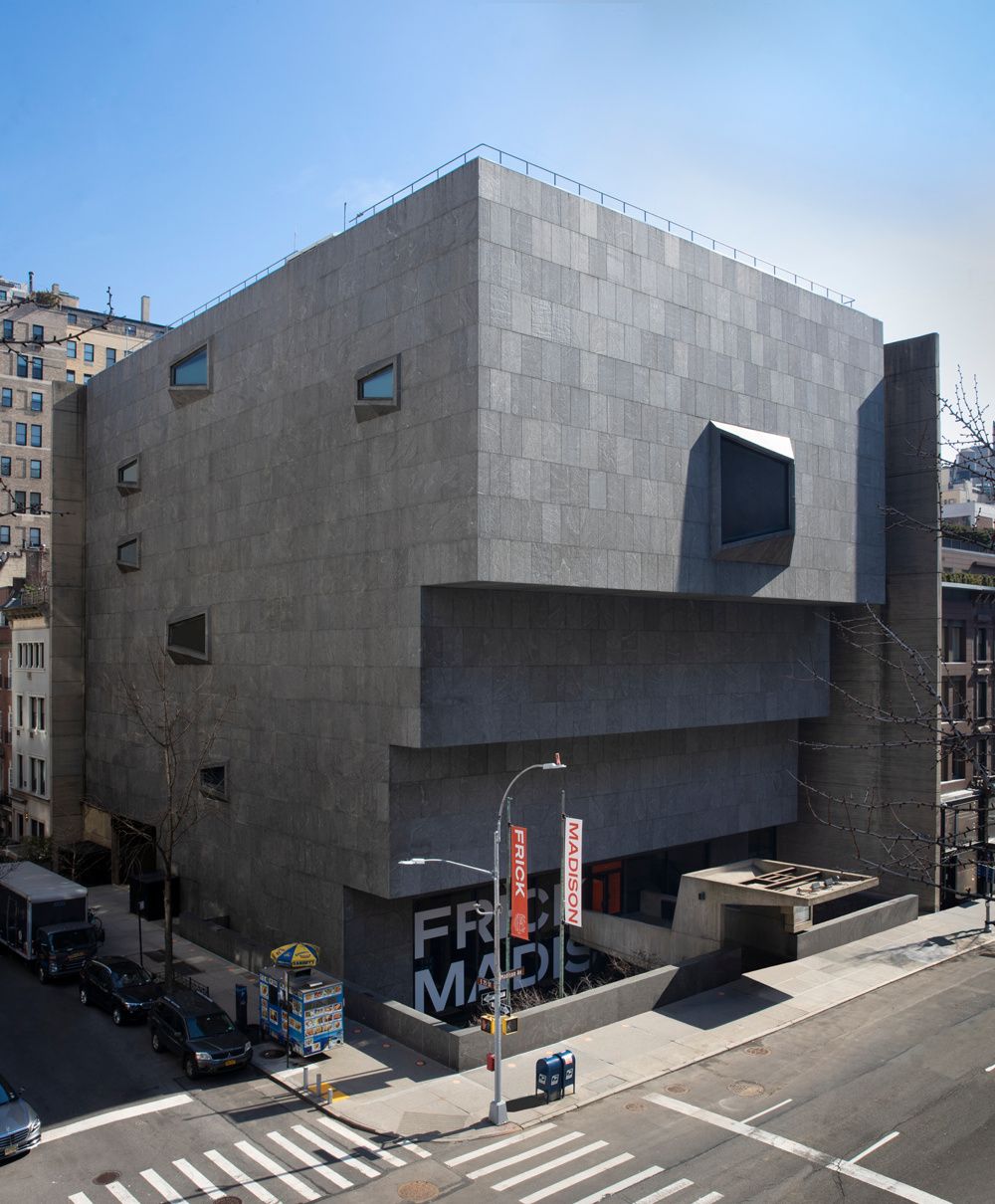
This educator-led tour of the collection’s highlights is just $20 for Untapped New York Insiders, a $70 value! Not an Insider yet? Use promo code JOINUS when you sign up today and get your first month free!
When the Frick announced in 2019 that it would be closing the mansion for renovation and rebuilding, and moving the collection to the Breuer building on Madison Avenue, many of us groaned. Absurd! The Frick’s Old Masters in that cold, brutalist building? It didn’t work well for the Whitney Museum, how can it possibly work for the Frick?
But we were wrong and the Frick’s curators were right. They have done everything with care and precision to set off their magnificent holdings in the best possible light, and to welcome their guests to Breuer’s “concrete shrine” in the most gracious yet educational way. You can pick up a printed guide in the lobby or pull out your iPhone and download Bloomberg Connects, an invaluable service provided by Bloomberg Philanthropies.
Unlike the mansion, where Henry Clay Frick’s artworks are largely presented as he directed, works at Frick Madison are organized on three floors chronologically and by region. This means that those of us who paid insufficient attention in art history class are given our geographic and time bearings by the Frick. As you emerge from the elevator on each floor, you’ll first see a sculpture, introducing you to the superb works to come. Should you start on the immensely popular second floor—Northern Europe—you’ll be greeted by Jean Barbet’s angel, a French bronze from Lyon whose presence you almost surely overlooked in the Frick mansion garden court. The angel is an exceptionally rare example of 15th-century French metalwork, most of which was melted down during the French Revolution, says Xavier F. Salomon, Peter Jay Sharp Chief Curator, in Cocktails with a Curator (and if you missed the innovative and fun series, Cocktails with a Curator, during Covid, head to YouTube and start listening).
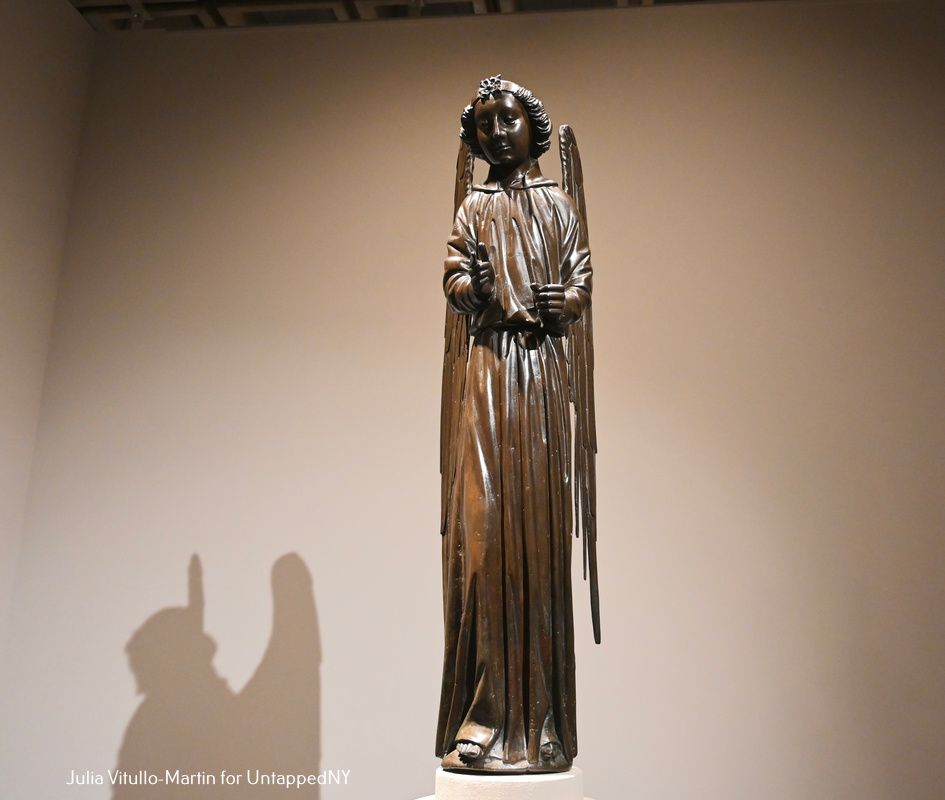
From the angel I always turn right to visit the Frick’s two extraordinary Holbeins: St Thomas More, looking elegant and serene, facing his enemy Thomas Cromwell, looking like a thug. Novelist Hilary Mantel deals directly with Holbein’s unattractive portrait of her hero Cromwell by having him say, “I look like a murderer,” to which his son replies, “Didn’t you know?” The two portraits stand as one form of evidence for today’s viewers to make up their own minds about saints and monsters. Mantel aside, Holbein’s More is considered the superior painting of the two, probably the greatest Holbein in America, says Salomon.
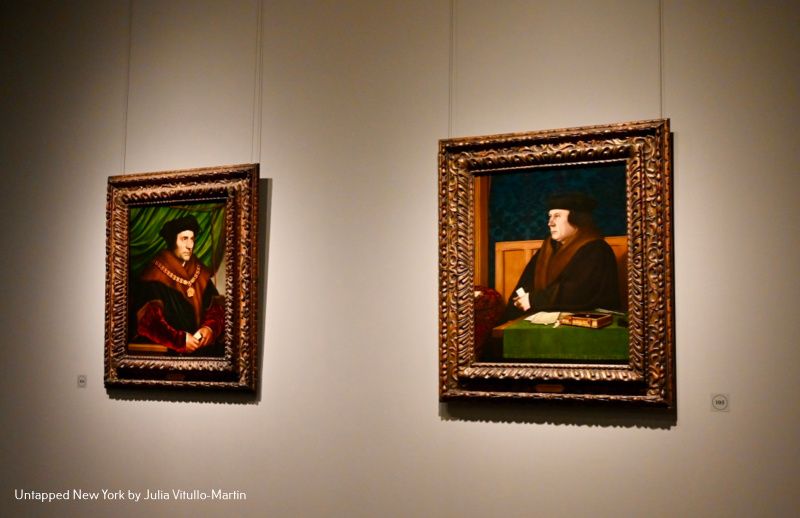
Hung in their own room at Frick Madison, More and Cromwell can be approached closely by visitors (the ever-attentive guards will make sure you don’t get too close). Henry Clay Frick acquired Thomas More as his first Holbein in 1912, followed a few years later by the acquisition of the portrait of More’s nemesis, Cromwell. Ever since the mansion was first inhabited by the Frick family in 1914, the two portraits had hung across the mantelpiece “flanking the fireplace, flanking the El Greco, St Jerome, in this wonderful juxtaposition of these great rivals,” says Salomon.
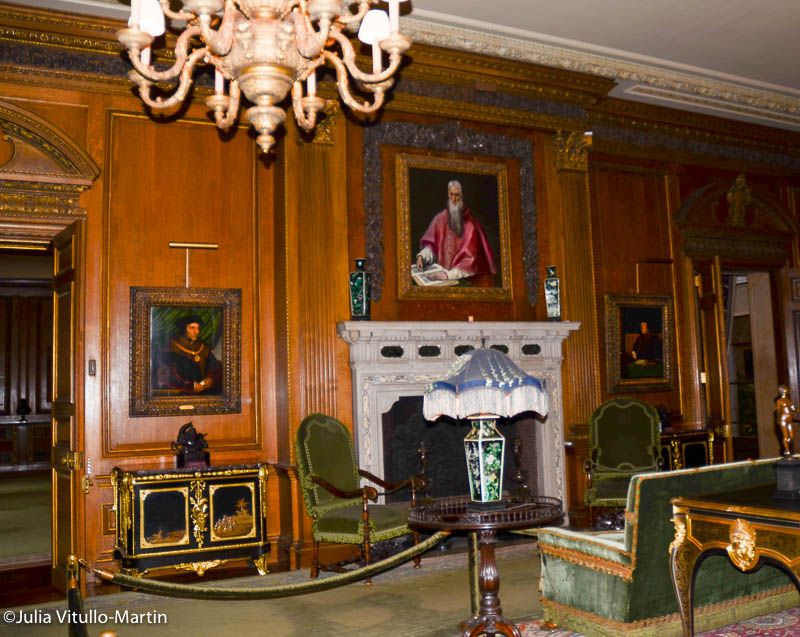
Frick was interested in great men. Around the corner from More and Cromwell hangs the sobering, immensely sad self-portrait of Rembrandt van Rijn, painted in 1658 when he was 52. When the painting was exhibited in 1909, the Metropolitan Museum of Art wrote that “it is the head of an old lion at bay, worn and melancholy, yet conscious of his strength, determined and a little defiant.”

Truly, one must sit on the bench kindly provided by the Frick and ponder Rembrandt and his life. Writes the Frick: “Executed during a period of constraint and adversity, at a time when Rembrandt had declared bankruptcy, and was obliged to sell his vast collections, this magisterial self-portrait presents the aging artist in historical and exotic costume that would have conjured associations with artists of the Northern Renaissance.” He spent the last 14 years of his life in penury.
The next room contains the Frick’s eight portraits by Anthony Van Dyke, spanning all periods of his short life working in Flanders, Italy, and England. They constitute a rather compelling history of his work, starting with the two rather austere portraits of Frans Snyders, a painter of still lifes and animals, and his wife, Margareta de Vos. But, said a Frick spokesperson giving me a tour, look at the next painting, probably of a Genoese noblewoman, reflecting Van Dyke’s time in Italy. Her clothing is sumptuous, and her expression mysterious but slightly welcoming. A very different Van Dyke from his non-Italian sitters.
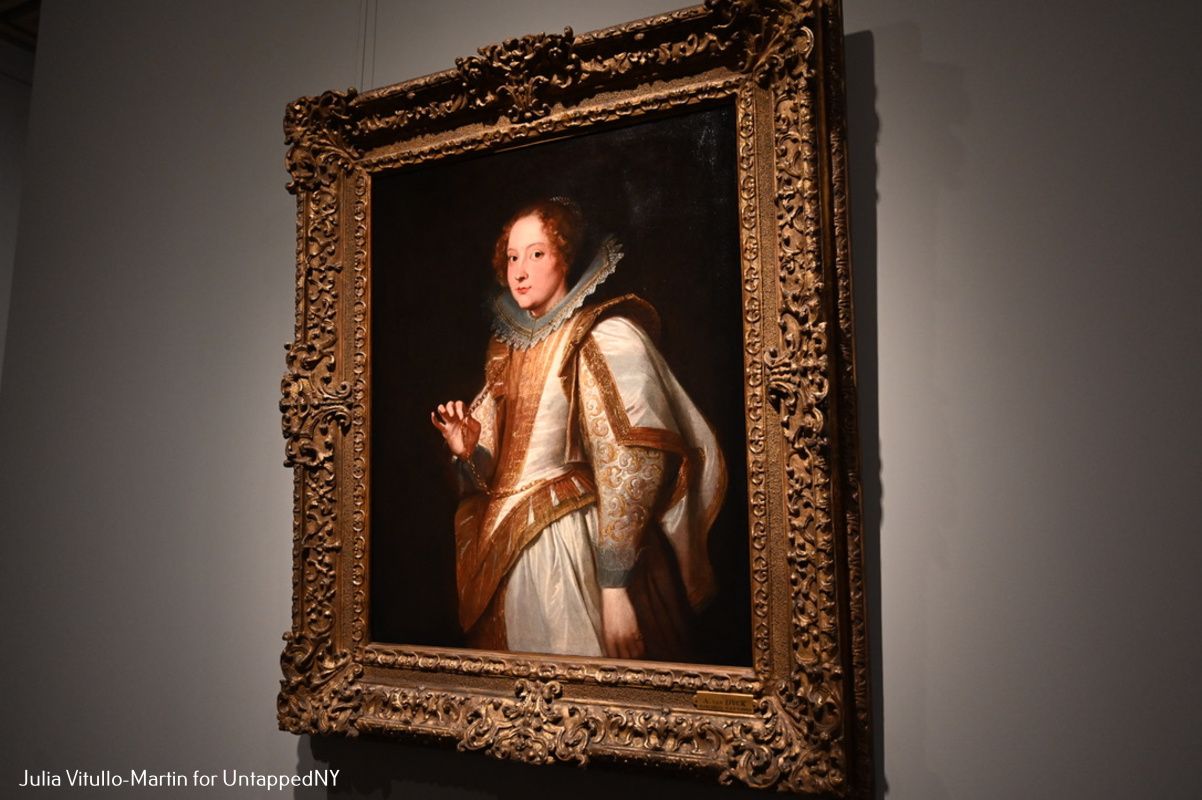
Van Dyke later became portraitist to the court of King Charles I, who knighted him and conferred the title “principalle Paynter” of the king. Frick Madison displays four portraits from Van Dyke’s English period.
Wonderful as it is to see the paintings up close, Frick Madison offers another once-in-a-lifetime delight: opulent furniture and rugs, in particular the furniture of the doomed queen, Marie-Antoinette. The Frick has two of Marie Antoinette’s pieces, a commode and secrétaire set, made by Jean-Henri Riesener. In a July segment of Cocktails with a Curator, Salomon begins with a painting of the storming of the Bastille on the 14th of July 1789, marking the start of the French Revolution.
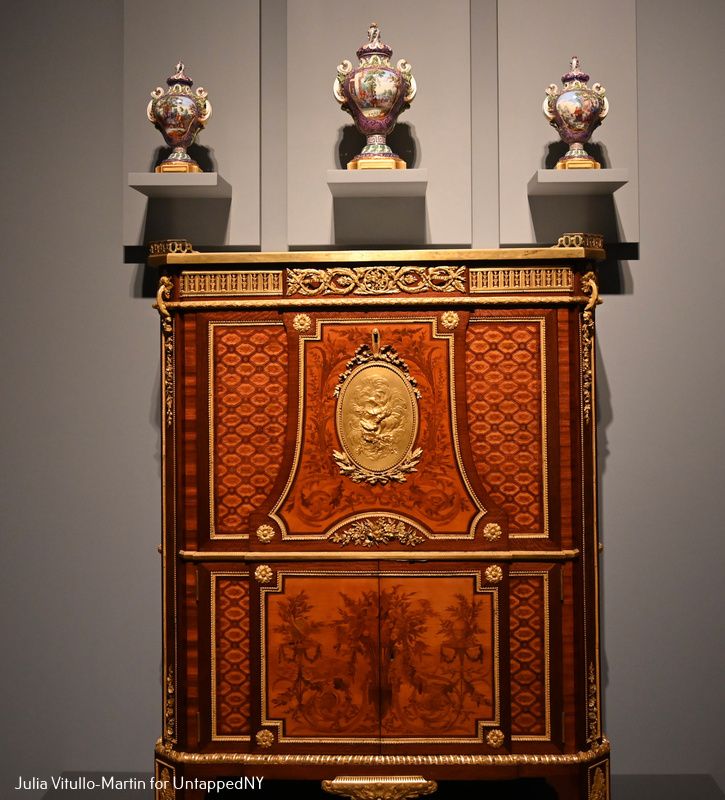
This splendid secrétaire, composed of oak veneered with precious woods including ash, bloodwood and amaranth, was relatively hard to spot at the mansion. The comments on YouTube include many thanks to Salomon for reminding fans to look for the furniture on returning to the mansion.
At the end of Cocktails, Salomon returns to Bastille Day, and notes that the Revolutionaries took King Louis XVI and the queen to the Tuileries, where they were imprisoned. Nonetheless, when the queen was allowed to ask for pieces of furniture from her former home, she requested the commode and secrétaire. Then, in 1792, the Tuileries were stormed, the king and queen were moved to prison, and they were both beheaded in 1793, he in January, she in October.
Before leaving pre-revolutionary France, however, look at the Longcase Regulator Clock, made by the workshops of Balthazar Lieutaud, Philippe Caffiéri, and Ferdinand Berthoud. The rearing, plunging horses are pulling the chariot of Apollo. The inscription reads; “The flying horses of the sun Pyrois, Eous, Author, and the fourth, Phlegm, neighing filled the air with fire and beat the door with their feet.” Frick intern Joselyn Garcia suggests that the horses are not, alas, driven by Apollo, but rather by his son Phaeton, who is filled with the pride of youth. He cannot control the horses, who gallop uncontrollably across the sky, causing Zeus to strike him down before he can burn the world to ash. The Frick lighting casts the shadows of the fearsome horses onto the wall.
Many life lessons at Frick Madison.
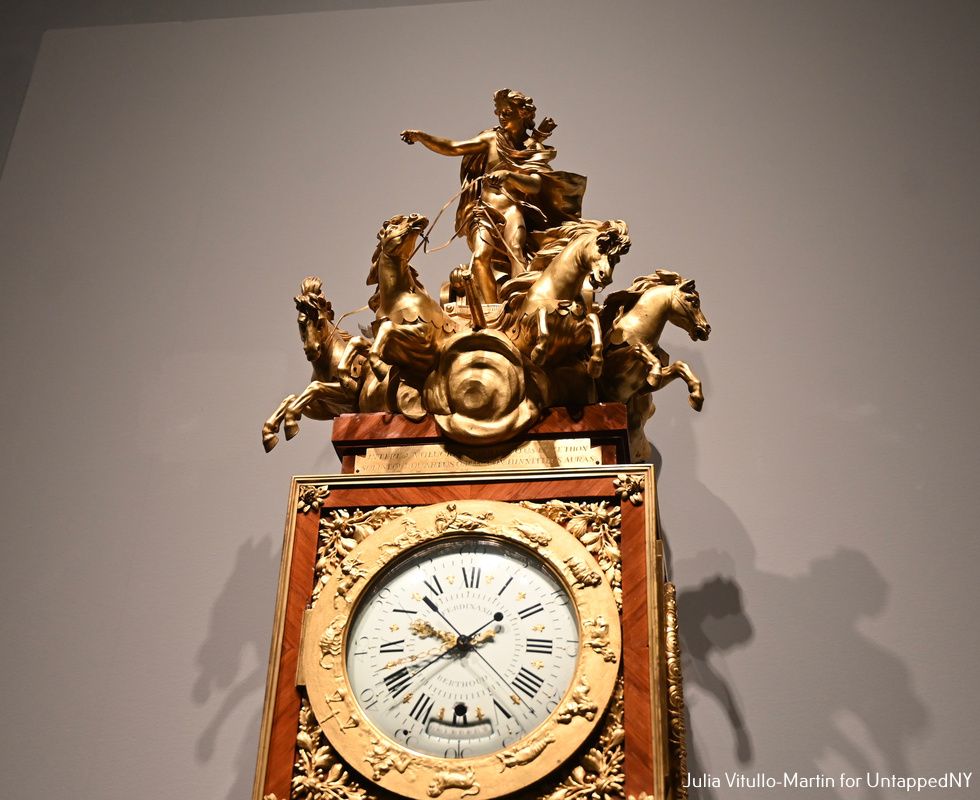
Much as the Frick glories in its remarkable collection, its curators are fully aware of our tempestuous world that is often inclined to dismiss the past in favor of the present. The Frick knows how to honor the past while re-imagining the present—thus the Barkley L. Hendricks: Portraits at the Frick exhibit that just closed in early January, and now the temporary Nicolas Party and Rosalba Carriera exhibit that will be up until March 3.
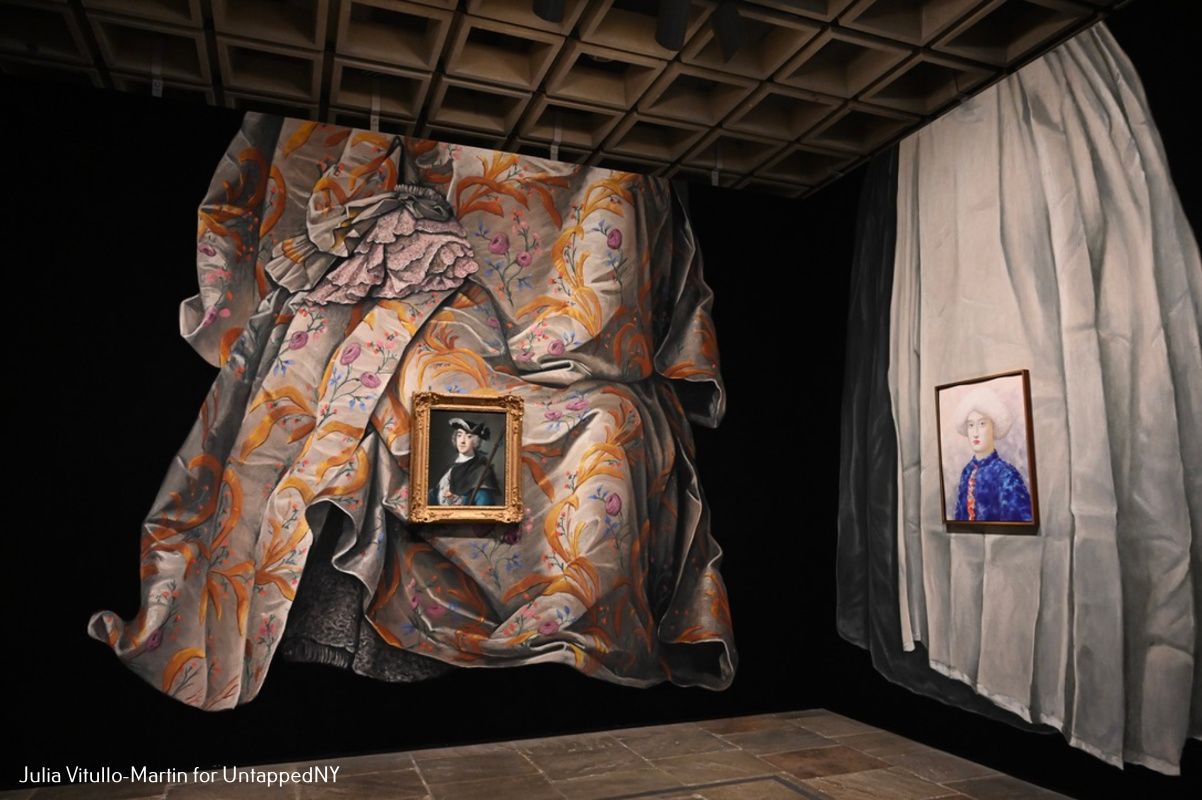
Rosalba—anticipating modern-day stars by being known only by her first name—was an 18th-century Venetian painter who worked mainly in pastels, and became one of the most successful women artists ever. She was “unbelievably famous,” says Salomon. The Frick recently acquired her “Portrait of a Man in Pilgrim’s Costume” (c. 1730) and invited Swiss artist Nicholas Party to design a site-specific installation partnering Pilgrim with pastel works of his own. In the Italian Galleries on the third floor the pastel Pilgrim, bequeathed to the Frick by Alexis Gregory in 2020, is enveloped in Party’s lustrous fabrics that pick up some of the colors used by Rosalba.
“You learn from the past,” Party tells Salomon in a video interview. He had not previously known of Rosalba, but when he started to delve into pastel for his artwork he discovered her, whom he calls “the queen of pastel” for her range of colors and techniques and fashion. And also “technically mesmerizing,” important since pastel is such a difficult medium.
Oddly, Party chooses his works to be ephemeral. After March 3, his gorgeous installation will be taken down, destroyed. “It’s liberating to me,” says Party. “It’s more like a performance,” than a work of art. Further, “The medium of the pastel is dust,” he notes. “Dust to dust.”
Book your ticket now to visit Frick Madison before the location closes on March 3rd! The final Free Open Night will take place on Friday, February 2nd from 5 pm to 9 pm and the final Last-Look Gallery Talks will run February 10th through March 2nd. Learn more about these events here and find out how you can join our private Untapped New York Insiders tour on February 27th! Registration for tickets opens on February 13th at 12pm ET.
The Frick offers its members generous, intellectual, and yet fun benefits at a wide level of membership tiers. Memberships come with access to events, lectures, and programs, plus discounts on purchases at the store and cafe.
The individual membership, for example, costs $75 and provides unlimited admission for one plus 20% discounts on purchases, and member-only programs, many of which are wonderful. The Member Preview Days, Member Mornings, and Member Evenings will doubtless become even more valuable when the Frick Returns to the mansion at the end of 2024.
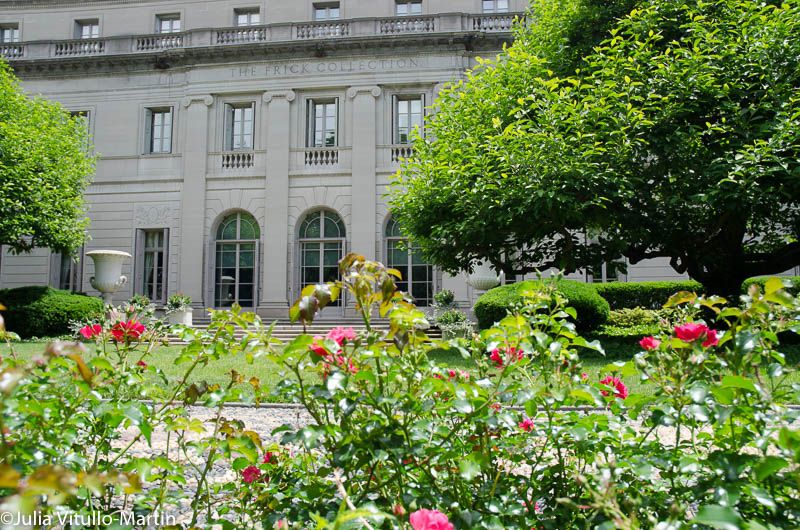
Next, check out 15 Secrets of the Frick Collection
Subscribe to our newsletter